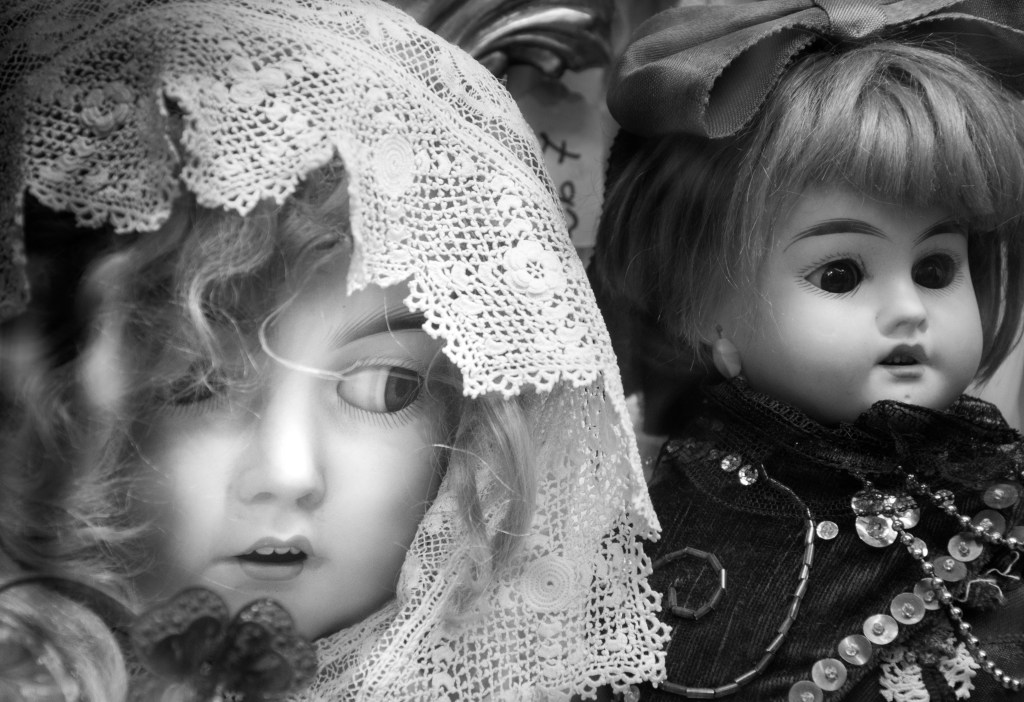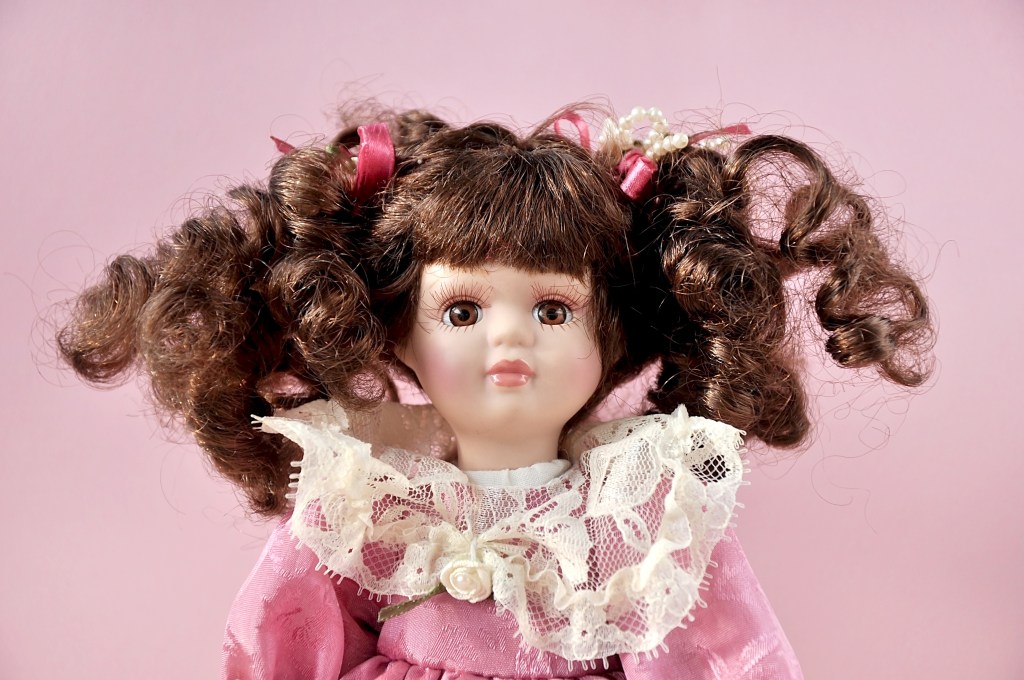
The Intricate World of Porcelain Dolls: Discovering their Worth

The Intricate World of Porcelain Dolls: Discovering their Worth
Porcelain dolls have a storied past, originating as playthings and eventually evolving into collectible items. These delicate and intricate dolls have been produced from a variety of materials and in an even greater variety of styles, making porcelain doll collecting a popular hobby today.
Between their beautiful clothing and their stunning china features, porcelain dolls have the ability to fascinate and intrigue. Many a collector will treasure an expensive porcelain doll. Read on as we uncover the history of porcelain dolls, their value as collectibles, and the different types of porcelain dolls that have been produced over the years.

A Brief History of Antique Porcelain Dolls
The very earliest porcelain dolls were made of Chinese porcelain, which is why they are also known as “china dolls.” The glazed porcelain gave these antique dolls a shiny appearance. China was used between 1840 and 1880 to produce doll heads, hands, and feet.
In the 1850s, people began to wish for more realistic looking skin. This is when doll makers introduced bisque dolls, which featured an unglazed matte finish that looked closer to actual skin. To keep the dolls from becoming too heavy, the bodies were often made from materials other than porcelain. For this reason, it’s not uncommon to find a porcelain head doll with a body made from other materials.
Another type of doll that was introduced was parian dolls, which were produced from un-tinted white porcelain. These parian dolls were mainly made in Germany, and they looked a lot like white marble. These dolls were not used as toys, but rather as decoration.
Today, doll collectors all over the world are interested in both antique and modern porcelain dolls. There are a wide variety of styles to choose from, making them an exciting collectible for both children and adults alike.

Types of Antique Porcelain Dolls
Chinese Porcelain Dolls
Chinese porcelain dolls were popular between 1840 and 1940, but sales dropped in the mid-20th century. Still, production didn’t stop in the US and Japan, and dolls makers tried to copy the original productions.
Early Chinese porcelain dolls featured adult women, and they often had high foreheads and molded hair with a center part that led to rows of curls, which were tucked away behind the doll’s ears. Heads were always made of porcelain, but some of the older versions had wooden bodies that were peg-jointed.
China dolls from Germany featured molded black hair and painted blue eyes. Dolls from 1850 to 1870 had over the top, Parisian-style hair styles. Doll makers began to add details such as ribbons, curls, flowers, and braids. In the following years, molded hair was replaced by wigs.
Bisque Dolls
Bisque dolls originally came with leather or cloth bodies. In the 1970s and 1980s, there was a renewed interest in classic bisque dolls and manufacturing started once again. They are considered collectible items, as they are usually too delicate to play with.
Bisque dolls regularly featured a doll face with oversized eyes and a small, open mouth. There were beautiful details added, such as flowers, lace, and jewels.
Early bisque dolls had molded hair, but later they included wigs, glass eyes that opened and closed, and even inset teeth. Some dolls even had pierced ears!
There are three main types of bisque dolls:
- Adult Fashion Dolls: These dolls looked like adult women, and they were well-loved among rich families.
- Baby Dolls: In the early days, most dolls looked like adults. In the late 19th century, baby dolls made for children became popular.
- Character dolls: Character dolls imitated a specific costume or personality.

Factors & Elements that Dictate the Value of Antique Porcelain Dolls
What exactly are porcelain dolls worth? Valuing an antique porcelain doll is no easy task! There are many factors that contribute to their value, and even dolls from the same maker can vary greatly in value. Read on to learn more about the factors that influence value.
Manufacturer
Most manufacturers leave a mark of some kind on the doll. These are located on the head, shoulder, neck, or the bottom of the foot. Locate your antique doll’s manufacturer mark and use this to compare your doll to other dolls online, or to point out to an appraiser. If you decide to purchase a doll online and don’t see a manufacturer’s stamp pictured, make an inquiry and ask the seller for more photos.
Some dolls come with a certificate of authenticity, which can help greatly with their identification.
Materials and Features
The unique features of the doll and the materials used can help tell the value, but you may need a bit of experience with dolls to become good at identifying these features. Dolls that originated in the 1800s and 1900s tend to have lifelike hair rather than molded hair, and their clothes are usually of leather. More modern porcelain dolls have cloth, stuffed doll bodies and Victorian-style clothing.
Condition
Condition is categorized by mint, near mint, very fine, fine, good, and poor. Dolls kept in mint condition will be more valuable than those in good or poor condition. Be sure to examine a doll carefully for imperfections – you may even want to check with a magnifying glass.
Comparables
If you are looking to determine the price of a doll, look for comparable ones online. Look for examples from the same manufacturer or time period to help you price your doll. You may even be able to find good information in online price databases.

Caring for Your Porcelain Dolls
Porcelain dolls are quite fragile, which often means that they are more of a collectible than a plaything. To care for your dolls, be sure to store them well. If they have their original boxes, that is probably the best place to store them.
You can also display them carefully on shelves or in cabinets, but be sure that they are out of reach of children and pets. Displaying them on doll stands behind the glass of a curio cabinet is perhaps the safest way to display them, as the glass will also protect them from dust.
FAQs
Where is the best place to sell your porcelain doll?
You might consider selling your porcelain dolls to an antique store or a pawn shop, but you won’t get top dollar as these sellers need to make a profit. The best way to get your money’s worth for a doll is to sell it yourself on an online auction site such as eBay. This will help you get the highest price for your collectible item!
What are porcelain dolls worth?
In general, the most expensive porcelain doll is an antique doll, while more modern examples tend to be worth less. That does not mean that newer dolls have no value, however. Many collectors are interested in both newer and antique dolls.
How much can I sell my porcelain dolls for?
The price you can get for selling a porcelain doll varies greatly based on the doll, its manufacturer, and its age and condition. Research your specific doll online or look for dolls from the same time period and manufacturer, to help you determine the best selling price.
How do I know if my antique doll is valuable?
Factors that impact the value include the manufacturer, the condition, and the materials and features the dolls is made with. Research online to determine if your specific doll has any monetary value.
Sources
About Collectibles Insurance Services
Collectibles Insurance Services has been protecting collections since 1966 and all coverage is provided by a carrier with a group rating of “A” (Excellent) by AM Best, the leading rating agency for the insurance industry.
Comprehensive coverage includes, but is not limited to: accidental breakage, burglary, fire, flood, loss in the mail, theft, natural disasters, and other causes of loss unless specifically excluded from the policy. Deductibles start at $0 for collector policies and we provide coverage for the market value of your collection for losses in excess of $50.
Additionally the protection extends At home and away, and we don't require collection itemization and serial number nor extensive paperwork and red tape.
